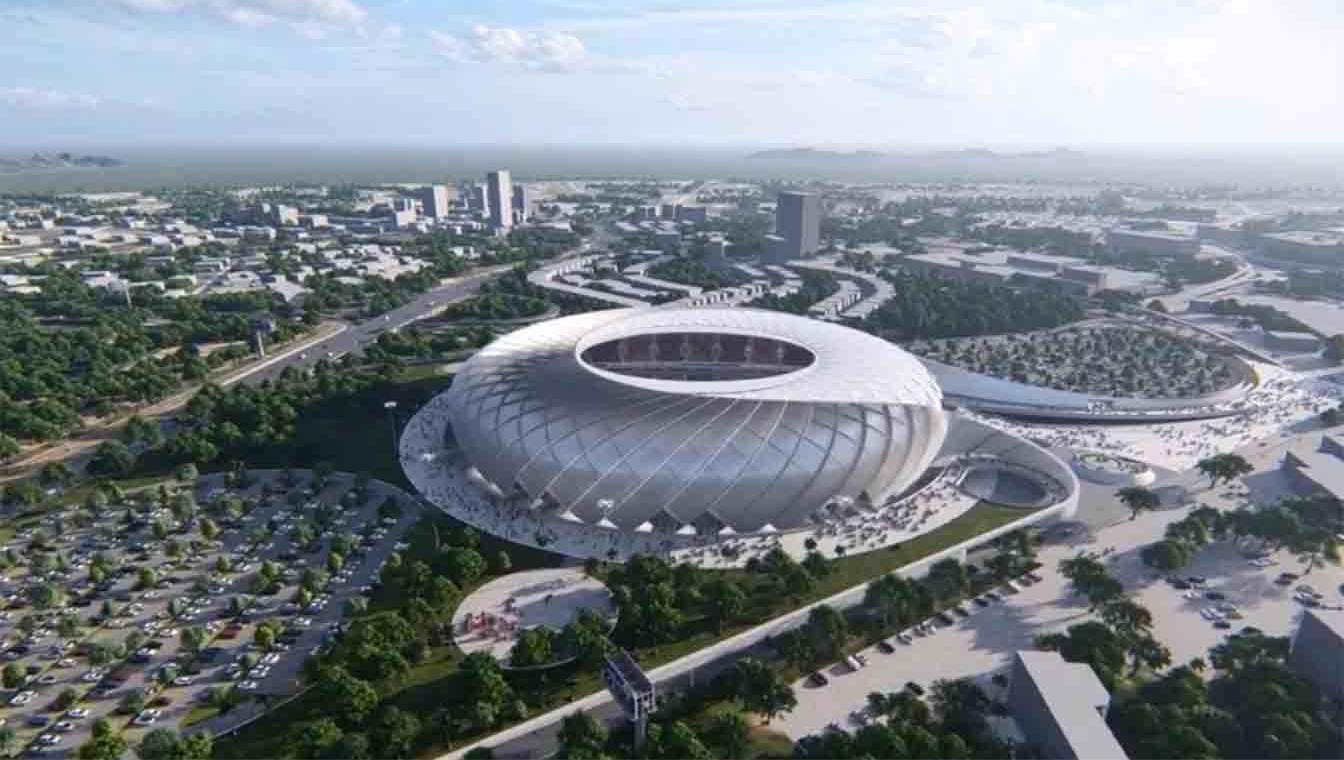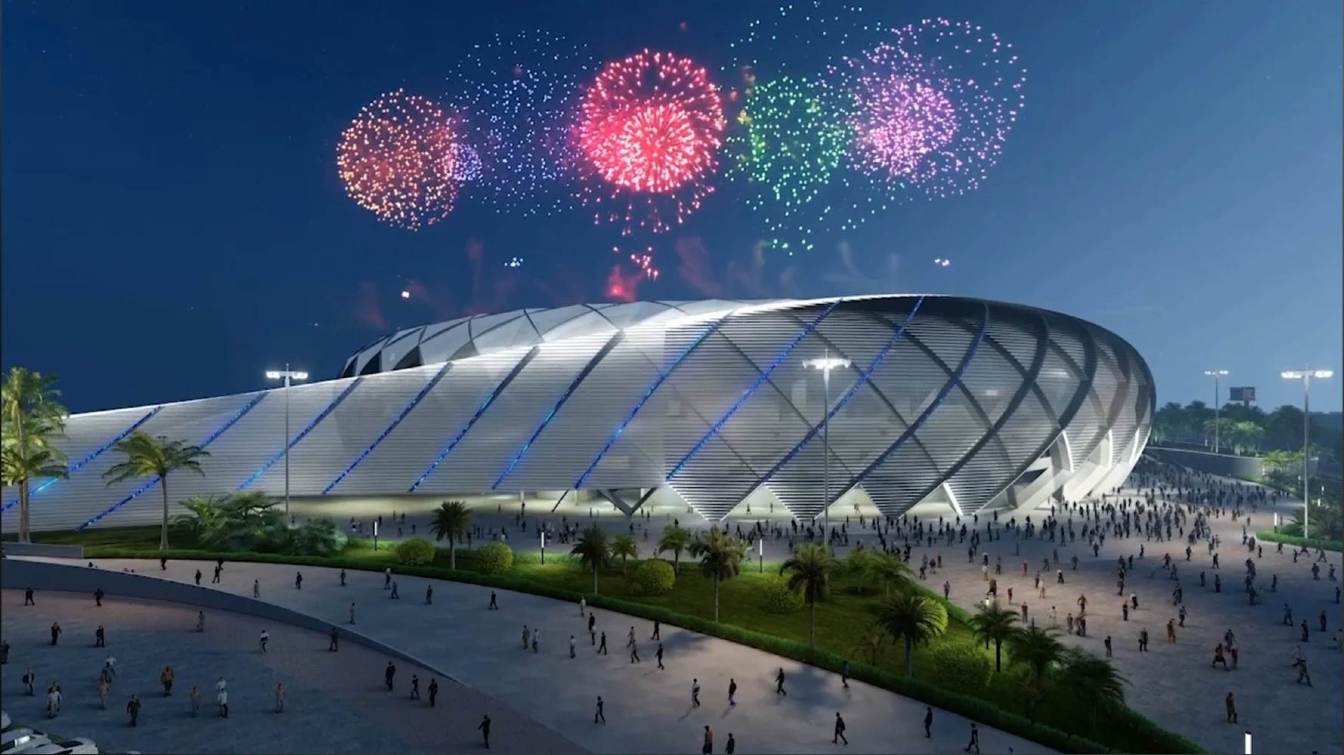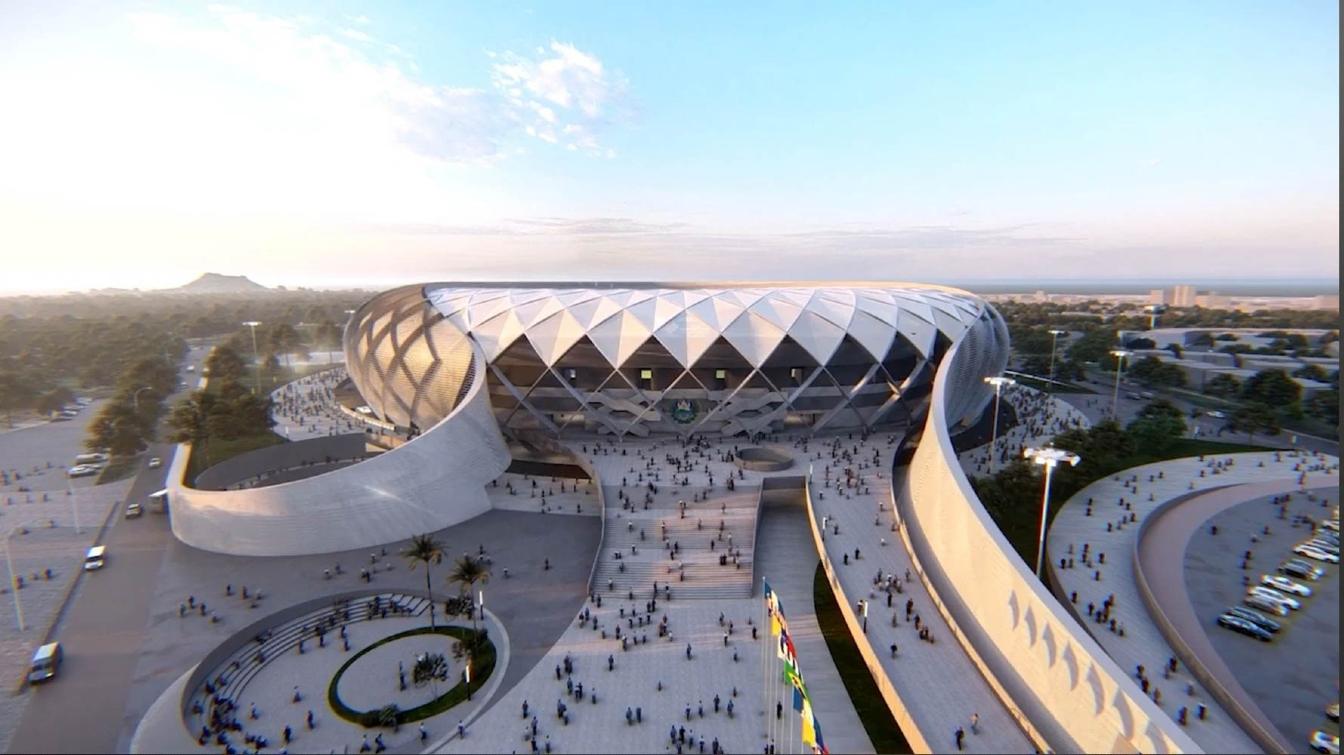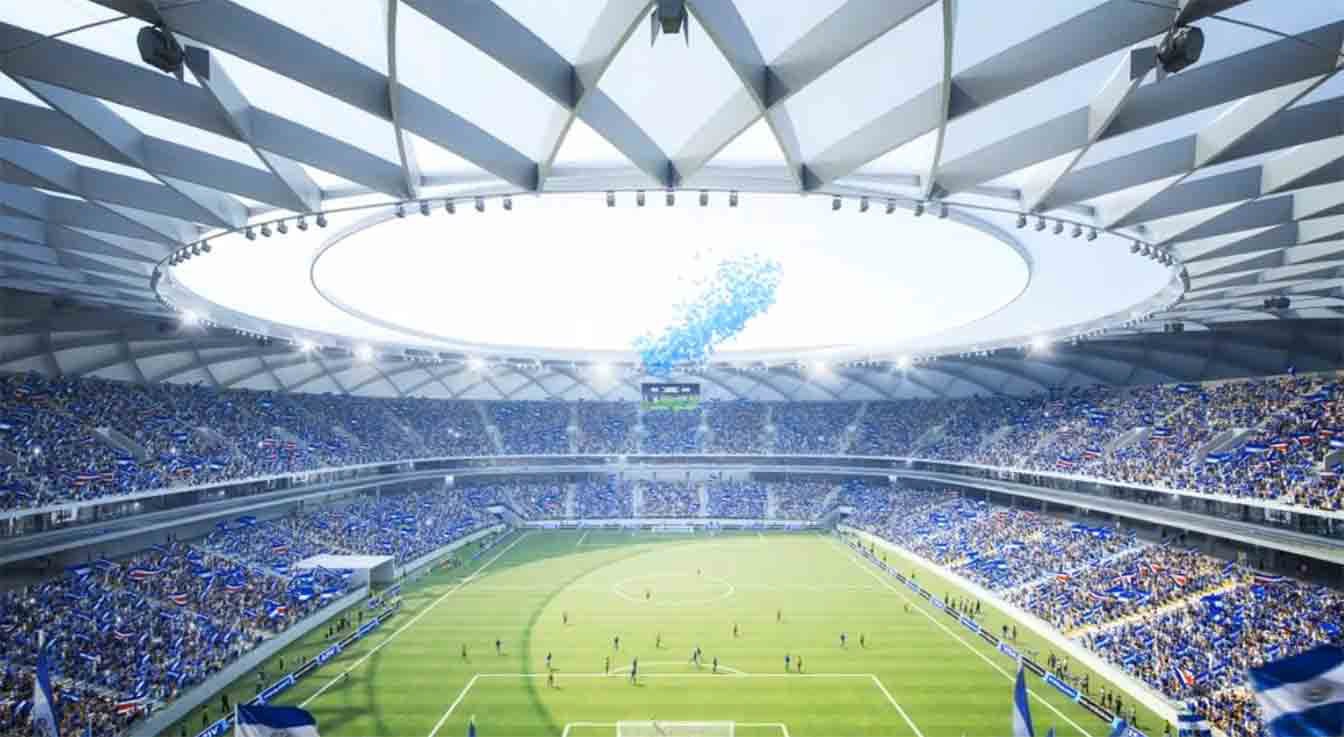El Salvador: The construction of Estadio Nacional begins!
source: StadiumDB.com; author: Robert Saganowski
 In this case, very little time has passed from words to actions. In December 2021, the president of the country announced plans to build a new national stadium and the whole project took off for good just after 9 months. And this is all with the help of the Chinese government, because it will fully finance the project.
In this case, very little time has passed from words to actions. In December 2021, the president of the country announced plans to build a new national stadium and the whole project took off for good just after 9 months. And this is all with the help of the Chinese government, because it will fully finance the project.
Advertisement
It is not the first time that the Chinese have helped smaller countries significantly when it comes to building new facilities. This is part of the country’s so-called stadium diplomacy, which has already seen a number of arenas built around the world. It has to be said that they are definitely targeting the national stadiums, because a year ago another facility of this type was inaugurated, which was also created with the support of the PRC. We are talking about Morodok Techo National Stadium in Cambodia, which cost 1,1 billion CNY (~ $160 million) to build.
This time, it fell on El Salvador and its capital, San Salvador, where a new venue will soon be built that even the organisers of this year's World Cup in Qatar would be proud of. It will be modern, elegant and coherent, as Estadio Nacional de El Salvador is set to become one of the architectural symbols of the capital. From an aesthetic point of view, the concept is intended to maintain a balance between modernity and nature, referring to local culture and tradition.
It all started out of the blue with a great New Year's Eve surprise that was brought to the people of this tiny Central American country by the president himself, Nayib Bukele. On December 31, 2021, he unexpectedly announced on Twitter his intentions to build a new national stadium. Preliminary design information and renderings of the arena were presented at the time. Now we already know that work will begin in September, as the Chinese Embassy recently reported via its social media.
The venue will be built in Antiguo Cuscatlán, in the western suburbs of the San Salvador metropolitan area, on the site of a military school (the facility is planned to be relocated to a new site, where it will receive more land for its activities and better infrastructure). Work is expected to take approximately three years. Construction is estimated to cost around $500 million.
The arena will have a football-specific layout, with gently curved stands surrounding the pitch on all sides. The two tiers of stands, separated by a business seating strip, will offer a capacity of 50,000 spectators, making Estadio Nacional de El Salvador the largest venue in this part of the world. The auditorium will be surrounded by a smooth, dome-shaped structure, forming both the external facade and the roofing of the stands.
The stadium will take on the role of the country's main football arena, becoming home to the Salvadoran national team. Previously, this function was held by Estadio Cuscatlán, inaugurated in 1976. In addition to football games, the facility will also host a full range of other events, such as exhibitions, festivals and concerts. The venue is expected to use the latest IT technology and have efficient energy consumption.
The architects' idea for the rounded shapes is to symbolise the drops of rainwater that for centuries enabled the civilisations of El Salvador to survive. The spherical form of the building was enriched with the motif of a winding ribbon, extending beyond the outline of the stadium in the form of walls surrounding the main entrance walkway. The shape of these walls refers to the waves of the ocean, at the same time symbolising the wings of freedom. The wide, open pedestrian walkway leading into the stadium is an artistic reflection of the openness and hospitality of the Salvadoran people.
With its light and elegant architectural style, the new representative national stadium is intended to highlight the greatness of civilization and technological advancement, while serving as a monument to the friendship between the nations of China and El Salvador. On the other hand, the construction is opposed by environmentalists, who claim that it will pose a threat to the surrounding flora and fauna. In their opinion, covering large areas of the site with parking lots will limit retention and reduce drinking water supplies, as well as pose a risk of flooding.
The warning signs are not being taken into account by the decision-makers as the work in Antiguo Cuscatlán is expected to begin in full swing. So far, there have been operations to evict equipment belonging to the military school and then, to demolish the army facilities themselves. The next step, which is taking place right now, involves starting construction as soon as possible. We will keep you updated on the progress of the construction of Estadio Nacional de El Salvador. Fingers crossed!
Advertisement

 StadiumDB
StadiumDB ©
©  ©
©  ©
©  ©
©